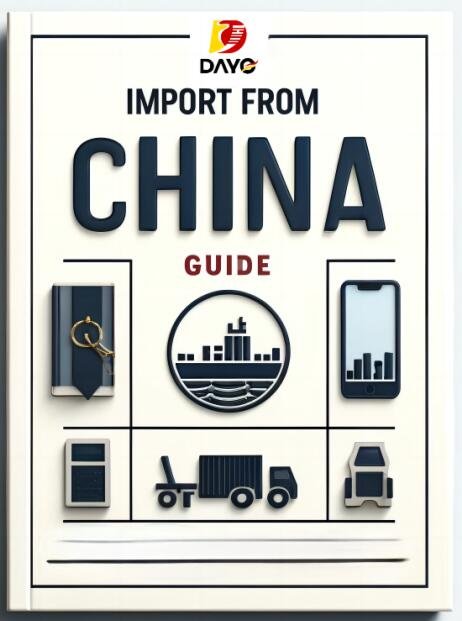
In today’s interconnected global economy, supply chains are the lifelines of businesses, enabling the seamless flow of goods and services across borders. However, recent geopolitical events, such as the Red Sea crisis and escalating U.S.-China trade tensions, have exposed the vulnerabilities inherent in these complex networks. To navigate these challenges, enterprises must adopt a robust 5-level risk management framework that ensures supply chain resilience, incorporates comprehensive Business Continuity Plans (BCPs), and establishes alternative supplier reserves.

1. The Domino Effect of Geopolitical Events on Supply Chains
Geopolitical disruptions can have cascading impacts on global supply chains, affecting everything from raw material availability to distribution channels. Two notable events—the Red Sea crisis and the U.S.-China trade war—illustrate how such disturbances can ripple through the supply chain.
Red Sea Crisis
The Red Sea is a critical maritime corridor, facilitating a significant portion of global trade. Any instability in this region can lead to substantial disruptions. For instance, geopolitical tensions or conflicts can result in:
- Shipping Delays: Vessels may be rerouted or delayed, leading to longer transit times and increased costs.
- Increased Insurance Premiums: Heightened risks can drive up insurance costs for shipments passing through the area.
- Port Closures: Strategic ports may become inaccessible, forcing companies to find alternative routes or modes of transport.
Such disruptions necessitate agile and responsive supply chain strategies to mitigate potential losses.

U.S.-China Trade Tensions
The escalating trade war between the United States and China has led to the imposition of tariffs and trade barriers, compelling companies to reassess their sourcing and manufacturing strategies. Key impacts include:
- Increased Costs: Tariffs have raised the cost of importing goods, squeezing profit margins for businesses reliant on cross-border trade.
- Supply Chain Reconfiguration: Companies are exploring alternative sourcing options, such as shifting production to other countries, to circumvent tariffs. For example, some firms have moved manufacturing operations from China to Southeast Asian nations to mitigate tariff impacts.
- Market Uncertainty: Fluctuating trade policies create an unpredictable business environment, making long-term planning challenging.
These scenarios underscore the need for a proactive approach to supply chain risk management.

2. KSG’s Risk Assessment Tools and Emergency Response Mechanisms
To effectively manage supply chain risks, companies like KSG have developed sophisticated risk assessment tools and emergency response mechanisms. These systems enable real-time monitoring and swift action in the face of disruptions.
Risk Assessment Tools
KSG utilizes advanced analytics and data-driven models to evaluate potential risks across the supply chain. Key features include:
- Real-Time Data Integration: Incorporating live data feeds to monitor geopolitical developments, natural disasters, and other risk factors that could impact the supply chain.
- Predictive Analytics: Leveraging machine learning algorithms to forecast potential disruptions and assess their probable impact on operations.
- Risk Scoring: Assigning quantitative scores to suppliers, regions, and transportation routes based on their risk profiles, facilitating informed decision-making.

Emergency Response Mechanisms
In the event of a disruption, KSG’s emergency response mechanisms are designed to minimize operational downtime and financial losses. Components include:
- Crisis Management Teams: Dedicated teams trained to respond swiftly to supply chain emergencies, coordinating efforts across departments and with external partners.
- Alternative Logistics Plans: Pre-established contingency plans for transportation and distribution, ensuring the continued flow of goods even when primary routes are compromised.
- Communication Protocols: Clear guidelines for internal and external communication during a crisis, maintaining transparency with stakeholders and preserving trust.

3. Case Study: How a Furniture Brand Avoided a $2 Million Loss Through KSG’s Multi-Country Alternatives
A prominent furniture brand faced potential losses due to escalating tariffs between the U.S. and China. By leveraging KSG’s risk management framework, the company successfully navigated the crisis.
Challenge
The brand sourced a significant portion of its products from Chinese manufacturers. The imposition of new tariffs threatened to increase costs substantially, potentially leading to a $2 million loss.
Solution
- Risk Assessment: KSG’s tools identified the high-risk exposure due to reliance on Chinese suppliers.
- Supplier Diversification: The company collaborated with KSG to identify and qualify alternative suppliers in countries not affected by the tariffs, such as Vietnam and Malaysia.
- Logistics Optimization: KSG assisted in redesigning the distribution network to accommodate new sourcing locations, ensuring timely delivery to key markets.
Outcome
By implementing these strategies, the furniture brand mitigated the impact of the tariffs, avoiding the projected $2 million loss and maintaining its competitive position in the market.

4. Implementing a 5-Level Risk Management Framework
To build a resilient supply chain, enterprises should adopt a comprehensive 5-level risk management framework:
Level 1: Risk Identification
- Supplier Audits: Regular assessments of suppliers to evaluate their financial stability, compliance with regulations, and operational capabilities.
- Geopolitical Analysis: Continuous monitoring of geopolitical developments that could affect supply chain stability.
Level 2: Risk Assessment
- Impact Analysis: Evaluating the potential consequences of identified risks on operations, finances, and reputation.
- Probability Assessment: Estimating the likelihood of risk occurrences to prioritize mitigation efforts.
Level 3: Risk Mitigation
- Diversification: Expanding the supplier base across multiple geographies to reduce dependency on a single source.
- Inventory Strategies: Implementing just-in-time inventory or safety stock policies to balance cost and availability.
Level 4: Risk Monitoring
- Continuous Surveillance: Utilizing technology to monitor supply chain activities in real-time, enabling early detection of issues.
- Performance Metrics: Establishing key performance indicators (KPIs) to track the effectiveness of risk management strategies.
Level 5: Risk Response
- Business Continuity Planning: Developing and regularly updating BCPs to ensure preparedness for various disruption scenarios.
- Stakeholder Communication: Maintaining open lines of communication with customers, suppliers, and regulators during disruptions to manage expectations and preserve relationships.

Conclusion
In an era of increasing uncertainty, supply chain resilience is paramount for business continuity and success. By understanding the potential impacts of geopolitical events, utilizing advanced risk assessment tools, and implementing a structured risk management framework, enterprises can safeguard their operations against disruptions and maintain a competitive edge in the global market.

